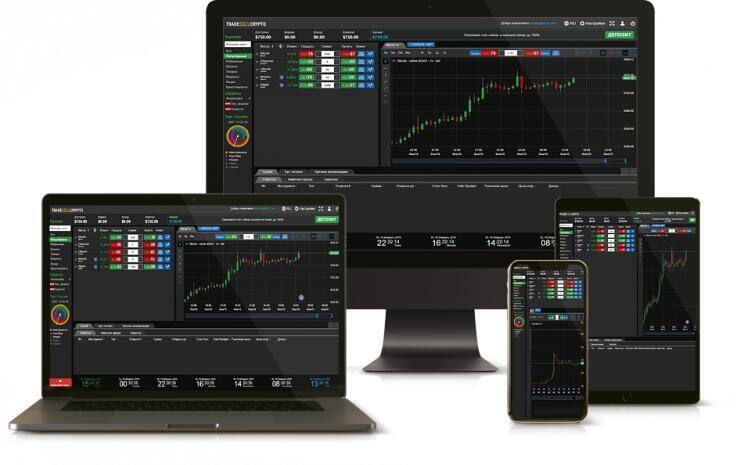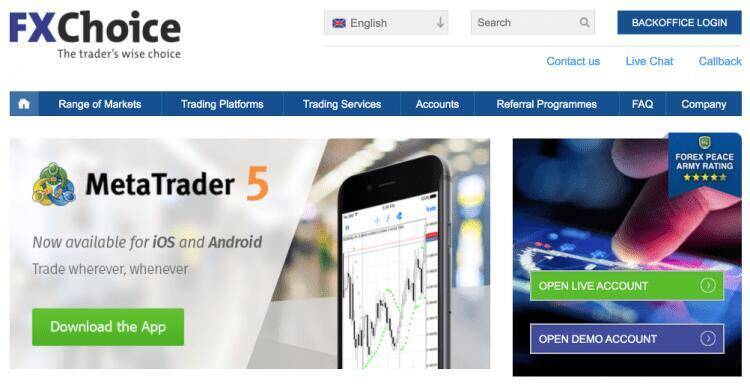Contents:


For example, during an economic downturn at the onset of the Covid-19 pandemic in 2020, the consumer staples industry benefited, and the luxury goods declined. Industries could be clustered into non-cyclical , high-risk , low-risk , or cyclical . For example, if the unemployment rate is increasing in a specific country, it can eventually negatively affect the demand for its currency and weaken it.
Alternatively, accounting irregularities on a particular company’s financial statements may indicate problems for a firm in an otherwise booming industry sector. Fundamental analysis allows us to understand whether a company’s stock or another asset is currently undervalued or overvalued. Based on this, investors make a choice in favor of certain assets for investment. The P/E ratio shows the ratio between a company’s share price and earnings. It shows undervalued and overvalued companies in relation to the company’s potential earnings, as well as the payback period and proportionality of earnings.
What is fundamental analysis?
Investors can use one or both of these complementary methods for stock picking. For example, many fundamental investors use technical indicators for deciding entry and exit points. Similarly, a large proportion of technical investors use fundamental indicators to limit their pool of possible stocks to “good” companies. So, an analyst can combine brand, longevity, growth above that of the beverages manufacturing industry, an above average price-to-earnings ratio, and good return on investment. Then, the sector and industry would be examined using statistics and metrics from various reports and competitor companies. Lastly, the analysts would gather the reports from Coca-Cola or the Security and Exchange Commission’s Edgar filings database.
- Adam Hayes, Ph.D., CFA, is a financial writer with 15+ years Wall Street experience as a derivatives trader.
- Benjamin Graham is considered the father of fundamental analysis.
- Industrial analysis is based on an in-depth analysis of an industry .
- Some examples are financial reports, ratios from the reports, spreadsheets, charts, graphs, infographics, government agency reports on industries and the economy, and market reports.
As such, bottom-up investing can be somewhat broad across an entire industry or laser-focused on identifying key attributes. Each approach can be quite simple—the top-down approach goes from the general to the specific, and the bottom-up approach begins at the specific and moves to the general. These methods are possible approaches for a wide range of endeavors, such as goal setting, budgeting, and forecasting.
Fundamental Analysis Indicators
The research also adds to the understanding of mispriced stocks in the European capital market. Therefore, in the FA of stocks, experts also look for factors that can influence or undermine the company’s performance. It starts with studying the company, digging up its record and performance, and then slowly moving upwards to macroeconomic factors like industry conditions and a country’s economy. A trader’s ability to successfully apply fundamental analysis depends on a number of factors.
Corporate governance describes the policies in place within an organization denoting the relationships and responsibilities between management, directors, and stakeholders. These policies are defined and determined in the company charter, its bylaws, and corporate laws and regulations. You want to do business with a company that is run ethically, fairly, transparently, and efficiently. Particularly note whether management respects shareholder rights and shareholder interests. Make sure their communications to shareholders are transparent, clear, and understandable.

Here are two examples of how you could use fundamental analysis to identify potentially profitable investments. Buy and hold investors believe that latching on to good businesses allows the investor’s asset to grow with the business. Fundamental analysis lets them find “good” companies, so they lower their risk and the probability of wipe-out.
Top-Down Approach
fundamental analysis approach analysis makes it possible to assess the current and projected state of the market or the value of an asset based on precise figures. Specifically, this approach uses the financial statements of publicly traded companies as the primary source for all sorts of quantitative data about a company’s business. The three most important reports for investors and traders are the income statement, the balance sheet, and the cash flow statement. Other quantitative indicators such as key rate, GDP, exports and imports, deficit/surplus, demand and more should also be analyzed. The next step in a fundamental trading analysis is to conduct extensive research on the company itself.
Can Upstart Holdings Inc (UPST) Stock Rise to the Top of Financial Services Sector Wednesday? – InvestorsObserver
Can Upstart Holdings Inc (UPST) Stock Rise to the Top of Financial Services Sector Wednesday?.
Posted: Wed, 19 Apr 2023 18:47:34 GMT [source]
The investment will pay off when the market catches up to the fundamentals. Begins by analyzing broad brush macroeconomic factors and aggregates of data working downwards narrowing and refining the search to include only those currency pairs that present a profit potential. At the same time, a top-down analysis gives you a comprehensive picture of the global economy. Keeping up-to-date with the performance of different economies can help you predict the trend of the specific industry you’ve invested in.
TECHNICAL ANALYSIS
The indicator reflects the percentage return the business pays its shareholders as dividends. There are plenty of other qualitative factors that can be taken into account. Such include the industry-wide growth, the regulatory framework in the particular industry, the competition and its behavior, the customer base, proprietary technology, patents, market dominance, and more. We can separate them into two categories – quantitative and qualitative.
How to Make A Dynamic Portfolio Despite Crypto Market Complexity … – Cryptopolitan
How to Make A Dynamic Portfolio Despite Crypto Market Complexity ….
Posted: Wed, 19 Apr 2023 17:48:57 GMT [source]
The experts study the products, commodities, services rendered, and substitutes available along with cost structure and revenue model and composition and the company’s future goals and objectives. It is determined by subtracting the fair value of the company’s net identifiable assets from the total purchase price. Market PriceMarket price refers to the current price prevailing in the market at which goods, services, or assets are purchased or sold.
Fundamental Analysis for Traders
For example, while a top-down investment fund might primarily focus on investing according to macro trends, it will still look at the fundamentals of its investments before making an investing decision. Investment management firms and investment managers can focus an entire investment strategy on top-down management that identifies investment trading opportunities purely based on top-down macroeconomic variables. These funds can have a global or domestic focus, which also increases the complexity of the scope. An analyst seeking a top-down perspective wants to look at how systematic factors affect an outcome.
- A company’s business model is one of the factors in a qualitative analysis of a company.
- We advise you to carefully consider whether trading is appropriate for you in light of your personal circumstances.
- The reports reflect a firm’s financial health and performance in a given period.
Additionally, a company’s brand can add value to an investment. Coca-Cola has been providing beverages for a long time, and its logo is recognized worldwide. She has 20+ years of experience covering personal finance, wealth management, and business news.
https://traderoom.info/ factors are quality of management, corporate governance etc. This quote by Warren Buffett perfectly captures the spirit of fundamental analysis. Great investors like Warren Buffett, Benjamin Graham and Peter Lynch have built fortunes using fundamental analysis. In the bottom-up approach the investor begins his search at specific companies, irrespective of their sector/area.
The assets on the left represent the resources that the company owns or controls at the current point in time. These can be cash, equipment, real estate, finished goods balances, etc. The right side of the equation reflects the total financing that was used to acquire these assets. Debt is repayable, while equity is the funds that owners have invested in the business, including retained earnings from performance in previous years.
The difference is that while the former can be measured in numerical terms, the latter is measured by abstract factors like quality or character. The top-down approach can be applied to country- or region-specific stocks by taking into account the local GDP projections, the unemployment levels, the economy’s health, and other factors. The graph visualizes what appears to be a straight correlation between both instruments.
Technical analysis is a trading discipline that seeks to identify trading opportunities by analyzing statistical data gathered from trading activity. Trend lines are similar to support and resistance, as they provide defined entry and exit points. However, they differ in that they are projections based on how the stock has traded in the past. They are often utilized for stocks moving to new highs or new lows where there is no price history. Anderson is CPA, doctor of accounting, and an accounting and finance professor who has been working in the accounting and finance industries for more than 20 years.
They look for solid companies that can pass the test of time. It starts with a specific company, then branches out to projections for the industry, sector, and overall market. A fundamental approach focuses on a stock’s intrinsic value — how much it’s worth based on its fundamental ability to perform. Analysts use the best fundamental analysis tools available to guide clients. Stock analysts want to determine if a stock’s best days are behind it. Or, if managing a client’s portfolio, they might rotate it out for a better value stock.
They subsequently narrow their search to regional/ industry analysis of total sales, price levels, the effects of competing products, foreign competition, and entry or exit from the industry. Only then do they refine their search to the best business in the area being studied. Fundamental analysis is a vital ingredient of the financial markets’ reality nowadays. Today the days of romantic long-term investing seem to be gone. Instead, investors are seeking short-term profits and ways to exploit momentum trading opportunities. Fundamental analysis still plays a crucial role in the strategies of the most successful investors.

Fundamental analysis is one of the most effective tools for studying the situations in the financial markets and with individual assets. Bottom-up investing begins its research at the company level but does not stop there. These analyses weigh company fundamentals heavily but also look at the sector, and microeconomic factors as well.
An effective forecast model must be based on a thorough understanding of a company’s business, management, strategy, external environment, and historical results. Thus, an analyst begins with a review of the company and its environment—its industry, key products, strategic position, management, competitors, suppliers, and customers. Using this information, an analyst identifies key revenue and cost drivers and assesses the likely impact of relevant trends, such as economic conditions and technological developments. An analyst’s understanding of the fundamental drivers of the business and an assessment of future events provide a basis for developing inputs to the forecast model.
Fundamental Analysis – What is it, Types, Examples, FAQs and How … – Exchange Rates UK
Fundamental Analysis – What is it, Types, Examples, FAQs and How ….
Posted: Sun, 02 Apr 2023 07:00:00 GMT [source]
However, some investors prefer to use technical analysis to pinpoint when and how to react to the information derived through fundamental analysis. The fundamental approach for valuing a company is based on an in-depth study of the economy, the industry in which the company operates, and the company itself. The trader uses the data from this analysis to forecast market developments and to determine the intrinsic value of the company’s stock. Fundamental analysis allows you to see what the market value for a company should be.
